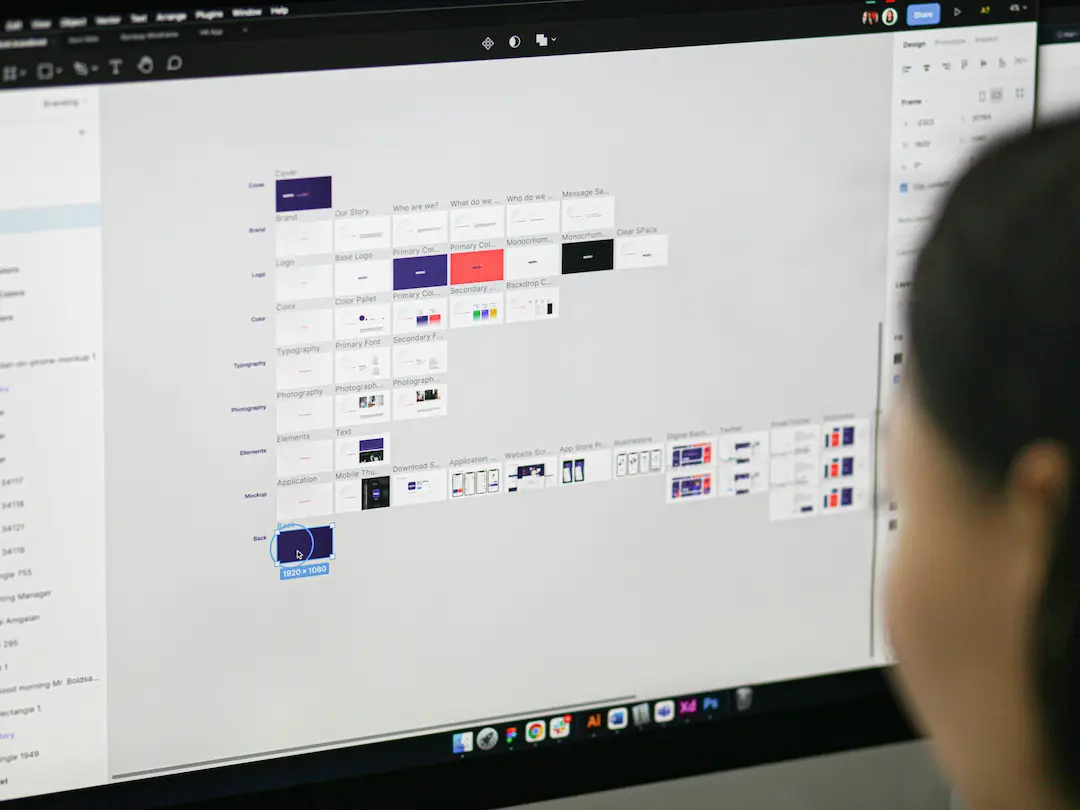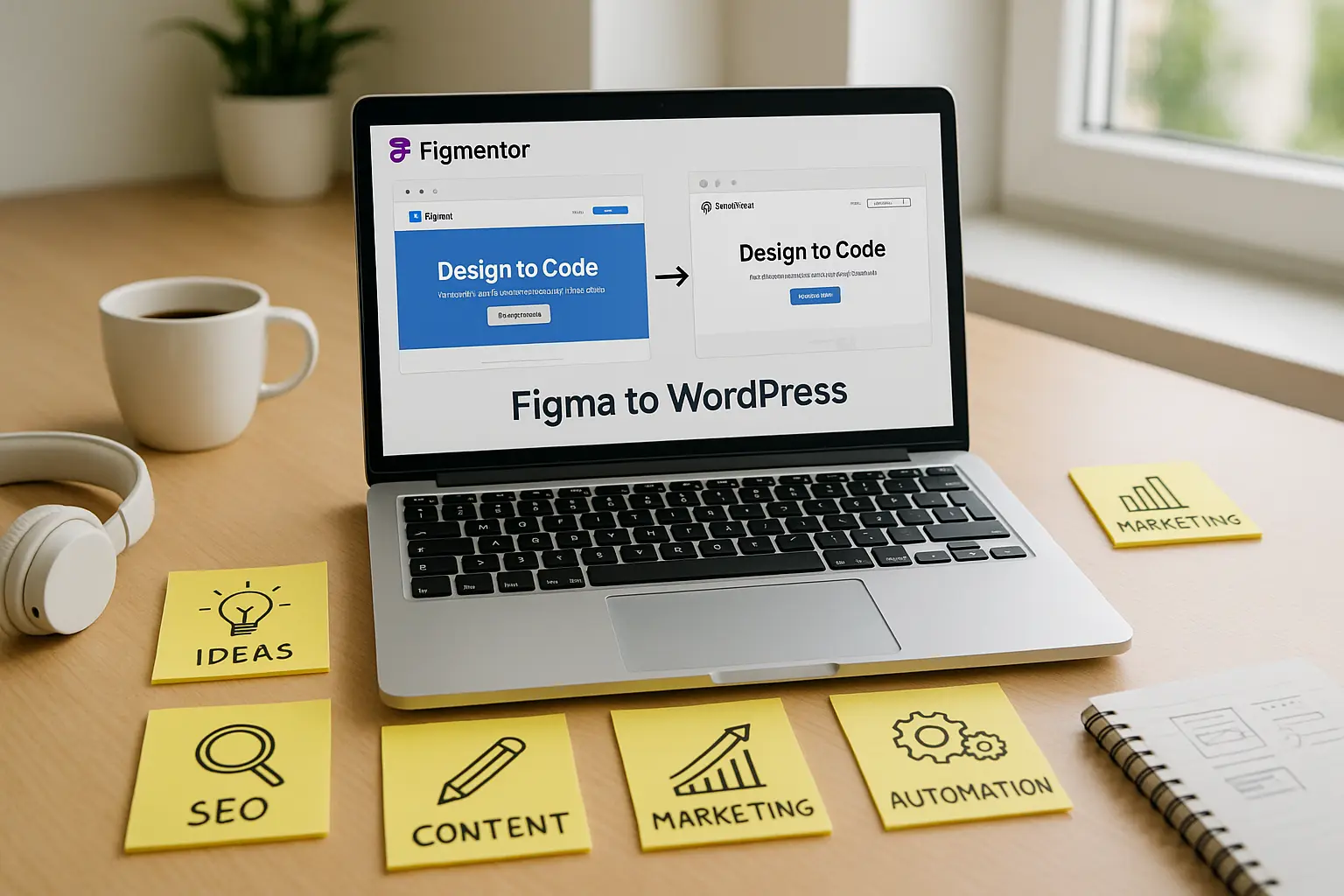Figma to WordPress: The Ultimate Guide for Designers & Developers
Transitioning from Figma to WordPress can feel like navigating a maze-complex, time-consuming, and prone to errors. But it doesn’t have to be. Whether you’re a freelance designer, a WordPress developer, or part of a creative agency, mastering this workflow can save hours of manual work, reduce errors, and streamline collaboration between design and development teams.
In this guide, we’ll break down the entire process-from preparing your Figma designs to implementing them in WordPress-while optimizing for speed, accuracy, and scalability. We’ll also explore tools, plugins, and best practices to ensure a smooth transition.
Why Convert Figma to WordPress?
Before diving into the “how,” let’s understand the “why.” Figma is a powerful design tool, but WordPress powers over 43% of all websites. Bridging these two platforms allows:
- Faster Development Cycles – Reduce the back-and-forth between designers and developers.
- Consistent Design Implementation – Ensure pixel-perfect accuracy from Figma to live WordPress sites.
- Improved Collaboration – Enable real-time feedback and iterations without miscommunication.
- Scalability – Reuse design components across multiple projects efficiently.
Step 1: Preparing Your Figma Design for WordPress
1. Organize Your Figma File Structure
A well-structured Figma file makes the conversion process smoother. Follow these best practices:
- Use Frames for Pages & Sections – Each major section (Header, Hero, Footer) should be in its own frame.
- Leverage Components & Variants – Reusable elements (buttons, cards, forms) should be components.
- Name Layers Clearly – Avoid generic names like “Group 1.” Use descriptive names (e.g., “Primary-Button-Hover”).
- Set Up a Design System – Define typography, colors, and spacing in a shared library.
2. Export Assets for WordPress
WordPress requires specific file formats for optimal performance:
- Images: Export as
.webpor.jpg(optimized for web). - Icons & SVGs: Use
.svgfor scalability. - Fonts: Ensure fonts are web-safe or hosted via Google Fonts/Adobe Fonts.
Pro Tip: Use Figma plugins like “Export Kit” or “Figma to WordPress” to automate asset exports.
Step 2: Choosing the Right Conversion Method
There are multiple ways to convert Figma designs to WordPress. The best method depends on your technical expertise and project requirements.
Option 1: Manual Conversion (For Developers)
If you’re comfortable with HTML, CSS, and PHP, manually coding the design ensures full control.
Steps:
- Extract HTML/CSS – Use Figma’s “Copy as HTML” feature or plugins like “Figma to Code.”
- Build a Custom WordPress Theme – Convert the extracted code into a WordPress theme.
- Use Advanced Custom Fields (ACF) – For dynamic content sections.
- Implement Responsive Design – Ensure mobile-friendliness with media queries.
Best For: Developers who need full customization.
Option 2: Using Page Builders (For No-Code/Low-Code Users)
If coding isn’t your strength, WordPress page builders like Elementor, Divi, or Brizy can help.
Steps:
- Install a Page Builder – Elementor is the most popular choice.
- Use Pre-Built Templates – Some builders offer Figma-like drag-and-drop interfaces.
- Import Designs via Plugins – Tools like “Figma to Elementor” can automate the process.
Best For: Designers and non-developers who want a visual approach.
Option 3: Automated Conversion Tools & Plugins
For the fastest workflow, use dedicated Figma-to-WordPress plugins:
- Figmentor – A plugin that directly imports Figma designs into Elementor.
- Anima – Converts Figma designs into responsive WordPress themes.
- Relay – Syncs Figma components with WordPress in real time.
Best For: Agencies and freelancers who need speed and scalability.
Step 3: Optimizing the WordPress Implementation
1. Ensure Responsive Design
- Test on multiple devices using Chrome DevTools.
- Use flexbox/grid for fluid layouts.
- Optimize images with Smush or ShortPixel.
2. Improve Page Speed
- Use a caching plugin (WP Rocket, W3 Total Cache).
- Enable lazy loading for images.
- Minify CSS/JS with Autoptimize.
3. Maintain Design Consistency
- Use global styles in Elementor or a custom CSS file.
- Implement design tokens (colors, fonts, spacing) for uniformity.
Step 4: Collaboration & Workflow Optimization
1. Use Figma’s Developer Handoff Mode
- Share measurements, assets, and CSS snippets directly from Figma.
- Enable comments & annotations for clear feedback.
2. Implement Version Control
- Use Git for custom themes.
- For page builders, backup regularly with UpdraftPlus.
3. Automate Repetitive Tasks
- Use Zapier to connect Figma with WordPress.
- Figmentor’s automation features can sync design changes instantly.
Best Figma to WordPress Plugins & Tools
| Tool | Best For | Key Features |
|---|---|---|
| Figmentor | Elementor users | Direct Figma-to-Elementor import |
| Anima | Developers | Converts Figma to responsive WordPress themes |
| Relay | Agencies | Real-time Figma-WordPress sync |
| Figma to Code | Manual coders | Extracts clean HTML/CSS |
| Elementor | No-code users | Drag-and-drop page building |
Common Challenges & Solutions
| Challenge | Solution |
|---|---|
| Design inconsistencies | Use a design system & global styles |
| Slow page load | Optimize images & use caching |
| Manual coding errors | Use automated plugins like Figmentor |
| Collaboration gaps | Implement Figma’s developer handoff mode |
FAQs
1. Can I convert Figma to WordPress without coding?
Yes! Tools like Figmentor and Elementor allow no-code conversions.
2. What’s the best plugin for Figma to WordPress?
Figmentor is the top choice for Elementor users, while Anima is great for developers.
3. How do I ensure my design stays responsive?
Use flexbox/grid layouts, test on multiple devices, and optimize images.
4. Can I automate Figma to WordPress updates?
Yes, Relay and Figmentor offer real-time syncing.
5. Is manual coding better than using plugins?
Manual coding offers more control but takes longer. Plugins are faster but may have limitations.
Conclusion
Converting Figma designs to WordPress doesn’t have to be a painstaking process. By organizing your Figma files, choosing the right conversion method, and leveraging automation tools, you can streamline workflows, reduce errors, and deliver high-quality WordPress sites faster.
Ready to automate your Figma to WordPress workflow? 👉 Try Figmentor today and experience seamless design-to-development conversion!
Internal Links
- Best Figma Plugins for Web Designers in 2025
- How to Optimize WordPress for Speed
- Elementor vs. Divi: Which Page Builder is Best?
- Figma to Elementor: A Complete Workflow Guide
- How Designers Can Skip Developers and Build WordPress Pages
- Real Use Case: From Figma to Elementor in 1 Hour
- How Much Time and Money You Save with Figmentor




